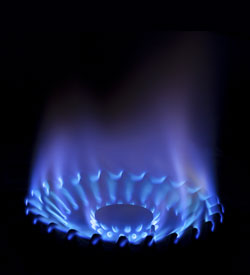Carbon Monoxide Safety
Carbon Monoxide Safety
What is carbon monoxide?
Carbon monoxide (CO) is known as the silent killer because it is an invisible, tasteless and odourless gas that can be deadly.
This odourless gas is produced as a byproduct of combustion when common fuel-burning appliances and equipment that use natural gas, oil, wood, propane and kerosene, don't get enough air to burn up completely.
When this happens, CO can build up, especially in a confined room or space – and this can lead to toxic effects on humans and pets.
Common sources of Carbon Monoxide
Most households have, on average, 4-6 appliances that produce carbon monoxide some examples are:
- Furnace
- Gas water heater
- Gas fireplace
- Gas stove
- Gas dryer
- Gas barbecue
- Portable generators
- Fuel-burning space heaters
What to do if the CO alarm sounds
Exposure to CO can cause flu-like symptoms such as headaches, nausea and dizziness, as well as confusion, drowsiness, loss of consciousness and death.
If your CO alarm sounds and you or other occupants suffer from symptoms of CO poisoning, get everyone out of the home immediately. Then call 9-1-1 or your local emergency services number from outside the building.
If your CO alarm sounds and no one is suffering from symptoms of CO poisoning, check to see if the battery needs replacing, or the alarm has reached its "end-of-life" before calling 9-1-1.
Since CO alarms do not detect fire or smoke and smoke alarms do not detect CO, your home needs both CO and smoke alarms.
How to prevent the build-up of CO in your home
Ensure fuel-burning appliances, chimneys and vents are cleaned and inspected by professionals every year before cold weather sets in.
Ensure vents for the dryer, furnace, stove, fireplace and other fuel-burning appliances are always be clear of snow and other debris.
Gas and charcoal barbeques must be used outside, away from all doors, windows, vents, and other building openings. Never use barbeques inside garages, even if the garage doors are open.
Portable fuel-burning generators must be used outdoors in well-ventilated areas away from windows, doors, vents and other building openings.
Ensure all portable fuel-burning heaters are vented properly, according to the manufacturer's instructions.
Never use the stove or oven to heat your home.
Open the flu for adequate ventilation before using a fireplace .
Never run a vehicle or other fuelled engine or motor inside a garage, even if the garage doors are open. Always remove a vehicle from the garage immediately after starting it.
Testing and replacing CO alarms
Test CO alarms every month by pressing the test button.
Replace batteries every year. Replace CO alarms according to the manufacturer's instructions.
Know the sound of the CO alarm
Your CO alarm sounds different than your smoke alarm. Test both alarms monthly and make sure everyone in your home knows the difference between the two alarm sounds.
Know the difference between the CO alarm's low-battery warning, end-of-life warning and an emergency alarm – consult the CO alarm manufacturer's instructions.
Carbon monoxide alarms should be replaced every 5-7 years as per the manufactures instructions.
Carbon monoxide alarm installation requirements
If your home has a fuel-burning appliance, a fireplace or an attached garage, install a carbon monoxide alarm adjacent to each sleeping area.
Fuel-burning appliances include furnaces, hot water heaters, gas or wood fireplaces, portable fuel-burning heaters and generators, barbeques, stoves and vehicles.
If you live in an apartment or condo building:
If there is a fuel-burning appliance in your condo/apartment, install a carbon monoxide alarm adjacent to each sleeping area.
If your building has a service room, carbon monoxide alarms must be installed in the service room and adjacent to each sleeping area of all condos/apartments above, below and beside the service room.
If your building has a garage, carbon monoxide alarms must be installed adjacent to each sleeping area of all condos/apartments above, below and beside the garage.
For added protection, install a carbon monoxide alarm on every storey of the home according to manufacturer's instructions.
Always follow the manufactures recommend installation instruction for clearance and distance from obstruction and appliances.
In general, "adjacent to each sleeping area" means the hallway serving or area outside the sleeping area. For instance, a CO alarm must be installed in the hallway adjacent to multiple bedrooms in a house or apartment.

